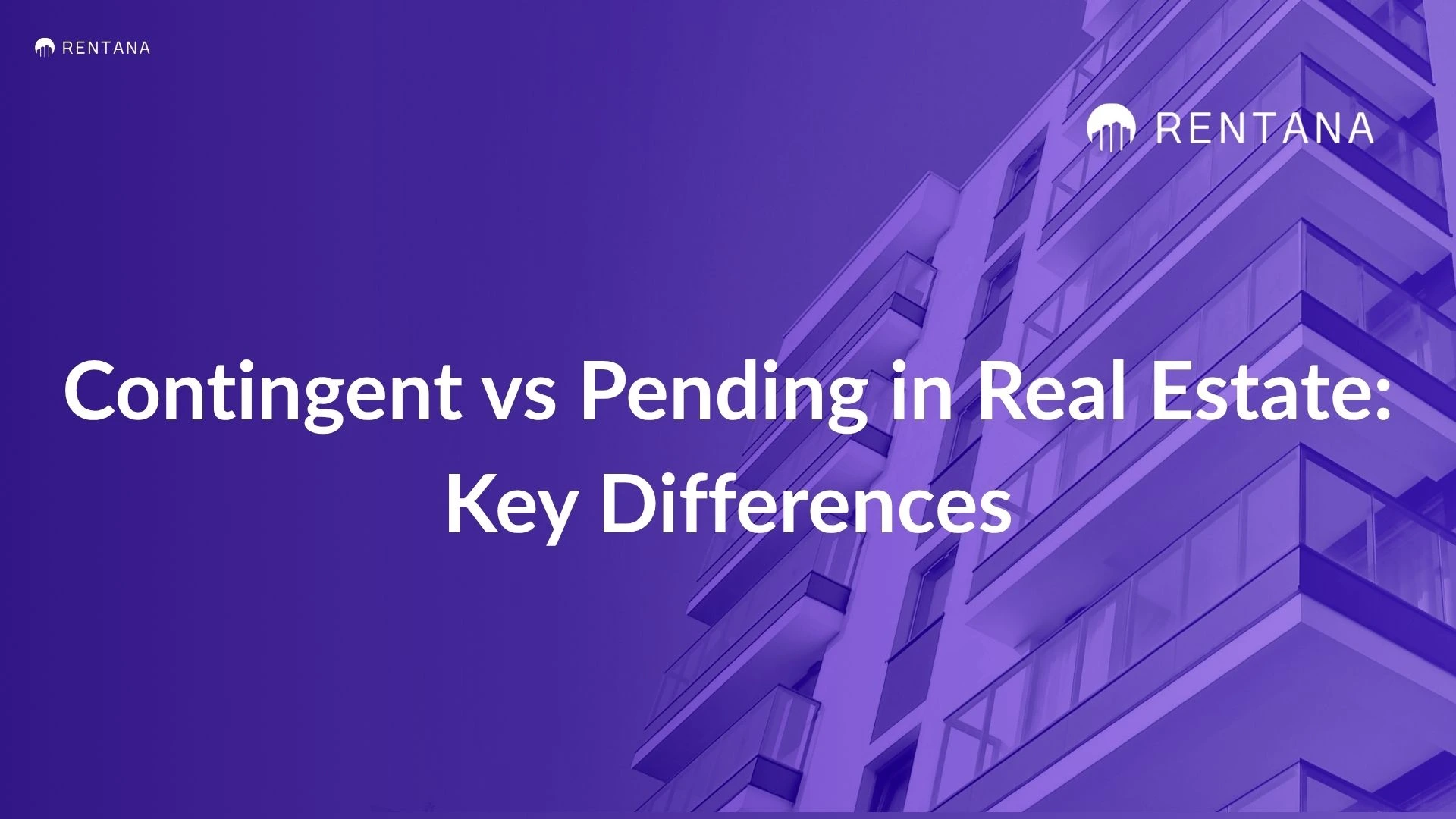




Alright, let’s talk about something that can be surprisingly confusing when you’re scrolling through homes online: those little labels next to the listings. You know the ones: “active,” “contingent,” “pending.” They look simple, but they actually tell you a lot about what’s happening behind the scenes with a property.
When you’re house hunting, it’s easy to get excited about a place that seems perfect, only to see one of those mysterious words next to it. What does contingent even mean? And why do some homes say pending instead? Are they still up for grabs, or is it too late to make an offer?
These little labels matter because they can save you time, energy, and even heartache. They tell you whether a home is still available or already spoken for. In real estate, every label is like a traffic light. “Active” is green, “pending” is red, and “contingent” sits somewhere in the middle, waiting for something to happen before the light changes.
So let’s clear up two of the most misunderstood ones: contingent and pending. They sound similar, and a lot of buyers mix them up, but they actually describe different stages of the home buying process. Once you understand the difference, you’ll be able to read listings like a pro, and know exactly where you stand when that dream home pops up online.
Related: What is the Standard Flooring Depreciation Life in Real Estate?

Picture this. You find a house you absolutely love. The kitchen is perfect, the backyard has just enough space for a hammock, and you can already imagine yourself grilling on a sunny Saturday. You decide to make an offer. The seller accepts it, but here’s the catch: the deal isn’t done yet. It’s contingent.
In real estate, “contingent” means the sale is waiting on certain conditions to be met before it becomes official. Think of it like being in a “maybe” stage. The buyer and seller have agreed to work together, but a few boxes need to be checked off before they can shake hands and call it a deal.
This means it also has legal significance: it allows either party to back out without penalty if the conditions are not met.
Contingencies are like safety nets built into a real estate contract. They protect both the buyer and the seller from unexpected problems that could pop up before the sale is finalized. You can think of them as “conditions” that must be met before the deal can move forward.
Let’s look at a few of the most common types and how they work in real life.
Buying a house is a big deal, and most people don’t have the full amount sitting in their bank account. That’s where the financing contingency comes in. It gives the buyer time to make sure their mortgage loan gets approved before locking into the purchase.
Imagine you’ve found your dream home and made an offer, but your bank still needs to finalize your loan. The financing contingency says the sale depends on that approval. If the bank doesn’t come through, you can back out of the deal without losing your deposit.
This protects buyers from getting stuck in a contract they can’t afford. It also gives sellers peace of mind that the buyer is serious and in the process of securing funds.
The inspection contingency is all about making sure the home is in good condition. Once the offer is accepted, the buyer hires a professional inspector to take a close look at the property.
Think of it like a doctor’s check-up for the house. The inspector checks the roof, plumbing, electrical systems, foundation, and more. If major problems are discovered, such as mold or a damaged roof, the buyer can ask the seller to make repairs or lower the price.
If the two sides can’t agree on a solution, the buyer has the option to walk away. This step helps buyers avoid surprises and gives sellers a chance to fix issues before closing.
Recommended: Is Multifamily Considered Commercial?
The appraisal contingency comes into play when the buyer is using a mortgage. The lender wants to make sure the house is actually worth the amount being borrowed.
A professional appraiser visits the property, looks at its features, compares it to recent sales in the area, and determines its value. If the appraised value comes in lower than the agreed sale price, the buyer might need to renegotiate or come up with extra money to cover the difference.
For example, if you agreed to buy a house for $300,000 but the appraisal says it’s worth $280,000, the bank will only lend based on that lower amount. The buyer can either pay the $20,000 difference, ask the seller to reduce the price, or cancel the deal.
Each contingency acts as a checkpoint in the buying process. Once all are cleared, the sale moves closer to being finalized. It’s like finishing each level in a game before reaching the end, you have to make sure everything lines up before you win the prize.

When you see the word pending on a real estate listing, it means the finish line is in sight. The buyer and seller have agreed on all the terms, the contingencies have been met, and everyone is just waiting for the deal to officially close. In simple terms, the house is spoken for.
If “contingent” is the stage where the deal still has a few “if this, then that” conditions, “pending” means all of those conditions have already been taken care of. The buyer’s financing is approved, the inspection and appraisal are done, and now it’s mostly about wrapping up the last few steps before the keys are handed over.
Even though “pending” means the deal is almost done, there are still a few important steps that need to happen before the sale becomes official.
Buying a home comes with a mountain of paperwork, and this is the stage where all of it gets finalized. The buyer’s loan documents are reviewed, signed, and verified. The seller also signs documents confirming the transfer of ownership. It’s a lot of signatures, but every one of them is important to make the sale legal.
The title company steps in to make sure the property’s ownership history is clean. They check that there aren’t any unpaid taxes, liens, or ownership disputes that could cause problems later. It’s like double-checking that no one else has a secret claim to the house before the new owner takes over.
Once the paperwork and title are cleared, the lender sends the loan funds to the seller. This step finalizes the money side of the deal. The buyer’s down payment and the bank’s loan combine to pay off the seller, and that’s when the property officially changes hands.
Read Also: What is the 2 Percent Rule in Real Estate?
“Pending” homes are further down the road than “contingent” ones because all the major decision points have already been settled. The buyer has committed financially, the seller has agreed to all terms, and the only thing left is closing day.
At this stage, the chances of the deal falling apart are pretty slim. It’s still possible, but rare. For example, a last-minute issue with the lender or an unexpected personal event could delay or cancel the sale, but most pending homes make it to closing without trouble.
So, when you see a listing marked as “pending,” it usually means the house is off the market and just about ready to become someone’s new home. It’s the calm before the final celebration, the stage where both buyer and seller can finally start to breathe a little easier.

By now, you’ve probably noticed that contingent and pending sound pretty similar. Both mean a home is under contract, but they’re not the same thing. The difference comes down to how far along the deal is and how much room there is for another buyer to jump in.
When a home is contingent, it means the seller has accepted an offer, but the sale depends on one or more conditions being met. These might include the buyer getting loan approval, the home passing inspection, or the appraisal matching the agreed price. The deal is active, but not final. There’s still a chance the sale could fall through if one of those conditions isn’t met.
A pending home, on the other hand, means all those conditions have been taken care of. The buyer’s financing has been approved, the inspection went well, and the appraisal checks out. At this point, the sale is moving toward closing, and the home is no longer open to other offers.
In simple terms:
Let’s break it down further so you can easily tell the two apart and understand what each one means for buyers and sellers.
When a property is contingent, there’s still a small window of opportunity for other buyers. Since contingencies are conditions that must be met, the deal isn’t fully locked in yet. For example, if a buyer’s loan falls through or the inspection reveals major problems, the contract could fall apart, and the home might go back on the market.
Sometimes sellers even allow backup offers while the property is in the contingent stage. That means if the first deal doesn’t work out, the next buyer in line could get a shot at it.
Once a property becomes pending, however, that window usually closes. The contingencies have been cleared, and both sides are simply waiting for the final paperwork and payment to go through. At that point, the home is basically taken, and it’s unlikely any new offers will be considered.
A contingent contract has more flexibility because there are still conditions in play. Both the buyer and seller might be negotiating repairs, waiting on an appraisal, or confirming financing. The deal could shift depending on how those steps go.
A pending contract, on the other hand, is mostly set in stone. The major decisions have already been made. It’s the “hands-off” phase of the process where everyone is just waiting for closing day.
It’s not common, but deals can still fall apart, especially during the contingent stage. Financing issues, inspection surprises, or appraisal problems can cause a sale to collapse. That’s why some buyers keep an eye on contingent listings, hoping they might come back on the market.
When a home is pending, the chances of that happening are much lower. By then, all the major obstacles have been cleared. It’s rare for a pending deal to fail unless something unexpected happens at the very end.
The contingent stage is like the middle part of a race. The buyer and seller have started moving toward the finish line, but there are still a few checkpoints ahead. The deal depends on clearing certain conditions, such as getting loan approval, finishing inspections, and confirming the home’s value. At this point, the sale isn’t guaranteed. Everyone’s still working through the details to make sure the deal makes sense for both sides.
The pending stage, on the other hand, is much closer to the finish line. All the major steps have been completed, and now it’s mostly about signing the last papers and transferring the money. The hard work is done, and both parties are simply waiting for closing day.
So if you imagine the home sale process as a journey, contingent is when the travelers are still on the road, and pending is when they’re just a few steps away from arriving at their destination.
Recommended: What is a Good Cap Rate for a Multifamily Property?
Making a contingent offer can be a smart move because it gives you protection as a buyer. It lets you back out of the deal if something important doesn’t go as planned, like your financing falling through or an inspection revealing serious problems. But even though contingencies are helpful, they also come with a few downsides that buyers should keep in mind.
In a competitive housing market, sellers usually prefer offers that look simple and certain. A contingent offer can seem risky from their point of view because it means the sale depends on outside factors. For example, if your offer includes a contingency for selling your current home first, the seller might worry about delays or the deal falling apart.
Imagine two buyers want the same house. One offers the same price but with no contingencies, and the other includes a few. The seller is more likely to choose the offer without any strings attached. So, while contingencies protect you, they can also make your offer less appealing.
Because a contingent offer can take longer to clear, there’s always a chance that another buyer might come along with a cleaner offer. In that case, the seller might choose the other deal or even accept a backup offer while your contingencies are still being worked out.
This doesn’t mean you shouldn’t use contingencies, they exist to protect you. However, it’s important to understand that time isn’t always on your side. The longer the process takes, the more opportunities there are for another buyer to step in.
Contingencies can stretch out the timeline of a sale. You’ll have to wait for inspections, appraisals, and loan approvals before moving forward. Each step brings its own risks and possible delays.
For example, if the inspection uncovers an issue, you might need to renegotiate with the seller, which adds even more time. It can feel stressful not knowing whether the deal will go through, especially if you’re already planning your move.
Sometimes, contingencies lead to extra expenses. You may need to pay for a home inspection, appraisal, or other professional services before you even know if the deal will close. If the sale falls through, that money is gone.
It’s not unusual for buyers to spend hundreds or even thousands of dollars during this stage, so it helps to be financially prepared just in case things don’t go as planned.
A contingent offer isn’t a bad thing. In fact, it’s often the safest route for buyers. But it’s good to go in with your eyes open. Understanding the risks helps you make smarter decisions, move confidently through the process, and know when it might make sense to adjust your offer to stay competitive.
Don’t Miss: Do you Still Pay Rent after a Concession?
Usually, no. Once a property is pending, the seller and buyer have already agreed on all terms and signed a contract. That means the home is basically off the market while both sides finalize the sale. However, in rare cases, if the contract falls through due to financing or last-minute issues, the seller may relist the property. Until then, other offers are typically not considered.
Pending comes after contingent. A contingent home is still in progress because it depends on certain conditions being met, such as inspections or financing approvals. Once all those contingencies are cleared, the listing status changes to pending. That means the sale is moving toward closing and is almost complete.
“Contingent” means the seller has accepted an offer, but the sale isn’t final yet. The deal depends on specific conditions, called contingencies, being met. For example, the buyer might need to get loan approval or pass a home inspection before the sale can move forward. If those conditions aren’t met, the contract could be canceled, and the property might go back on the market.
Yes, it does. When a home is pending, it means the seller has accepted the buyer’s offer and all major steps in the process have been completed. At this point, both parties are waiting for the final closing paperwork, title verification, and funding to wrap up. The sale is not final yet, but it’s almost there.
The pending stage typically lasts about 30 to 45 days, though it can be shorter or longer depending on the situation.
Factors like the lender’s timeline, title work, or final inspections can affect how fast the sale closes. During this period, the buyer’s financing is finalized, the documents are signed, and the keys are prepared for handover.
A seller might accept a contingent offer if it’s still strong overall. For example, the buyer could be offering a great price, a larger down payment, or flexible closing terms. In slower markets where homes take longer to sell, accepting a contingent offer can also be a smart move. It shows the seller is willing to work with a serious buyer while still protecting their own interests.
Sometimes sellers also agree to contingencies if they believe the conditions are likely to be met, such as when a buyer already has pre-approval from a lender or when the contingencies are fairly simple, like a routine home inspection.
Contingencies don’t just protect buyers, they can also help sellers. When contingencies are clearly laid out, both parties know what needs to happen for the deal to move forward. This transparency reduces confusion and prevents misunderstandings later.
